Ep. 9: 7 Billion Needles Volumes 1-4
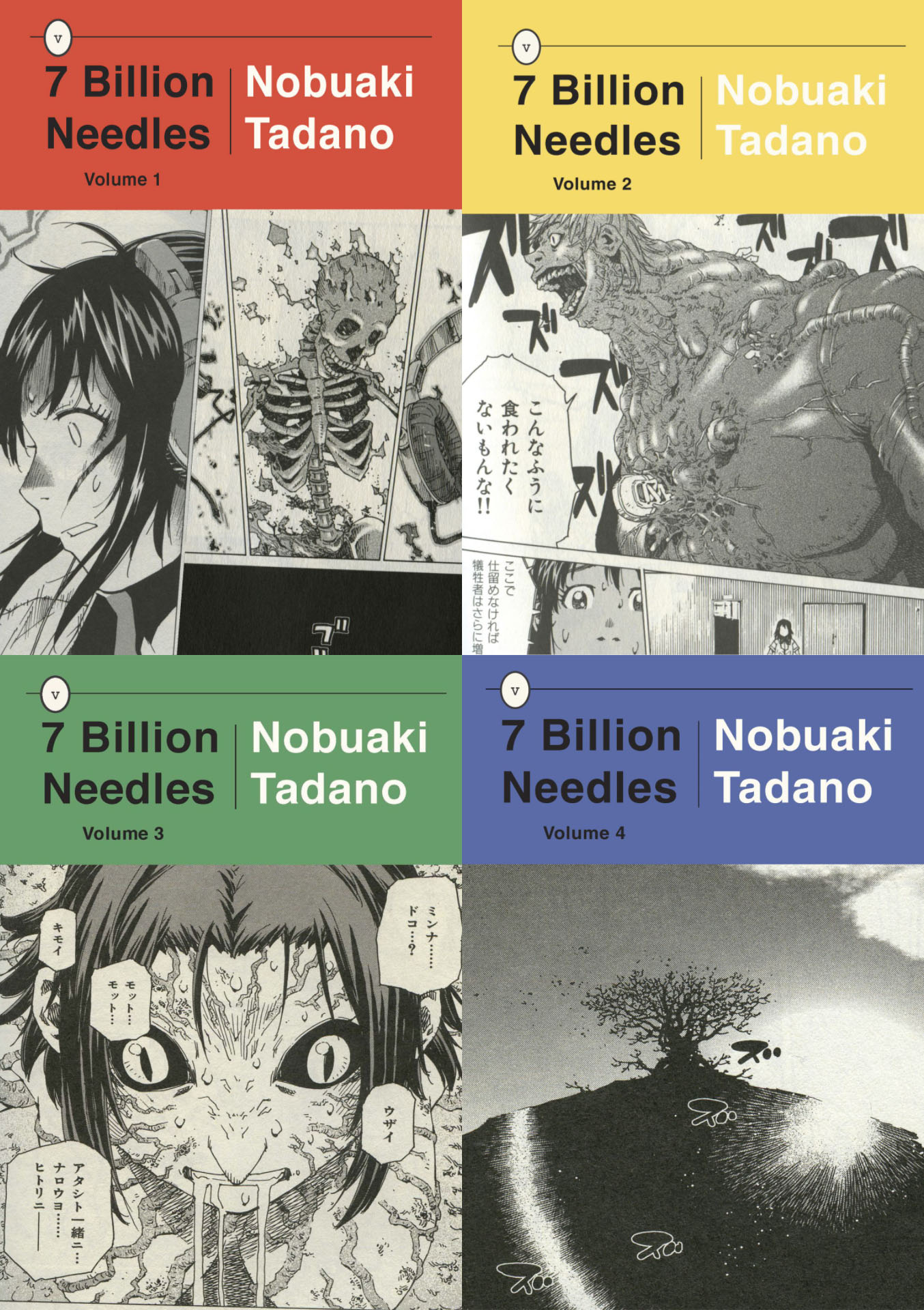
Lots of firsts this episode, as the Mangasplaing gang read their first complete series, their first digtal-only series, and we get the first hints that manga just might be breaking poor Chip’s brain! It’s all here in this discussion of the sci-fi epic 7 Billion Needles!
Powered by RedCircle
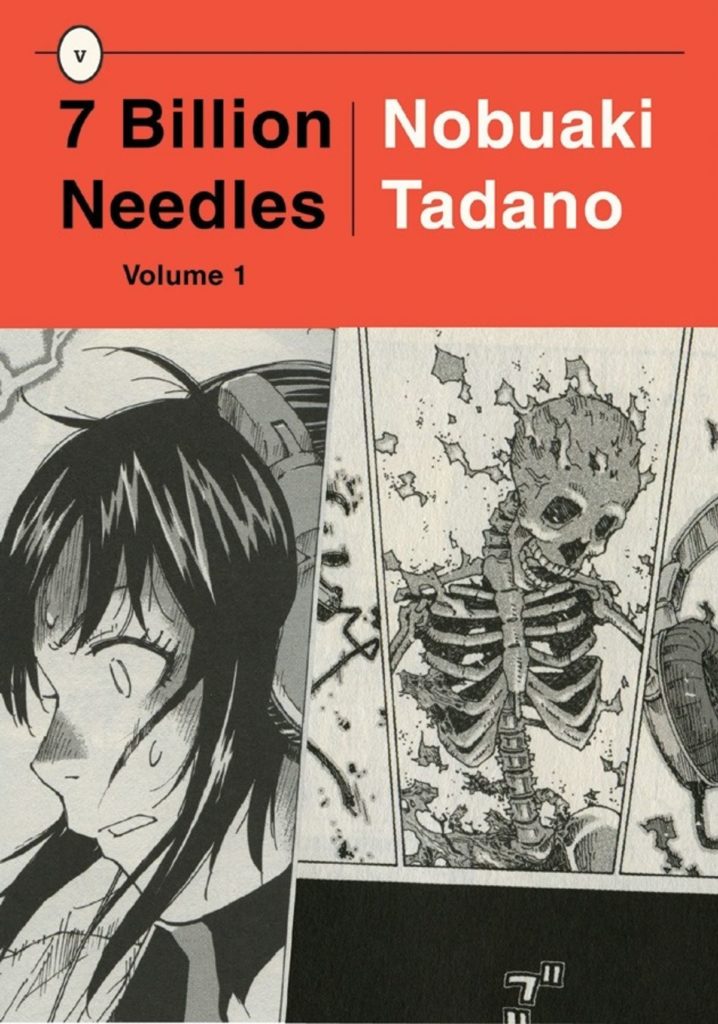
7 Billion Needles
70億の針
By Nobuaki Tadano
Published by Vertical Inc.
Before We Get Started…
First and foremost, this book will be heavily spoiled by this discussion. We bring it up because we’re usually not too afraid of spoilers on the podcast, but this book in particular is one that relies on twists and turns.
This is also the first book we’re doing that’s completely out of print in physical form, but is available digitally. We were able to find copies on Apple Books and Kindle, but it doesn’t show up on some ebook stores, probably because of its age. Sorry brick and mortar booksellers! Sometimes we wanna read a book that isn’t available in print.
Now let’s jump right in to a manga that begins with the ‘death’ of the protagonist…!
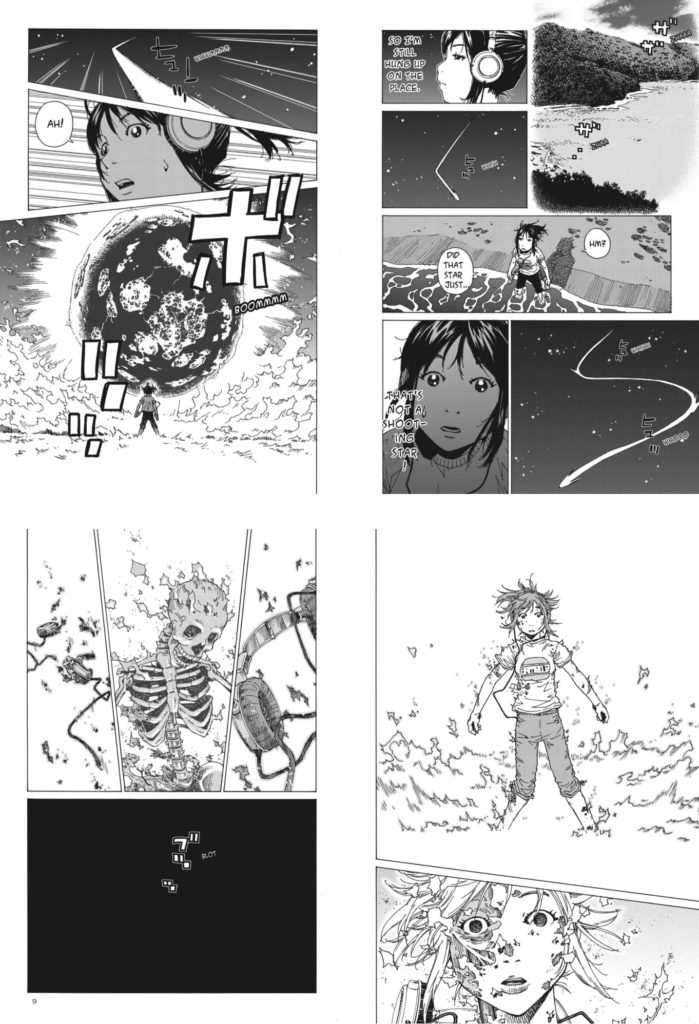
02:45: Yeeeeaaah… this is a book that suffers from same-face syndrome pretty badly. To the point that the plot of the first volume revolves around the bad guy killing a bunch of girls that have the same hairstyle as the protagonist because he can’t tell them apart. I’m sure this is like a reference to Terminator or something, with all the Sarah Connor’s getting killed, but it also kind of reads like a hilarious self-own by the artist?
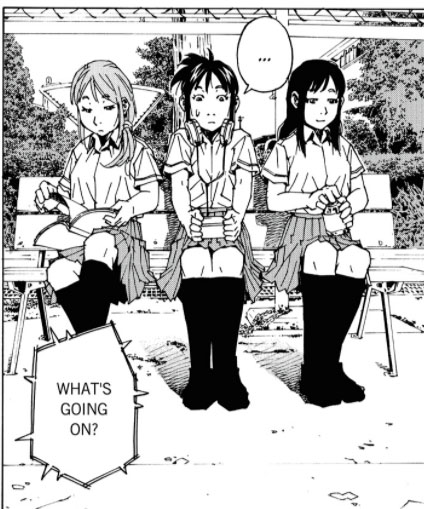
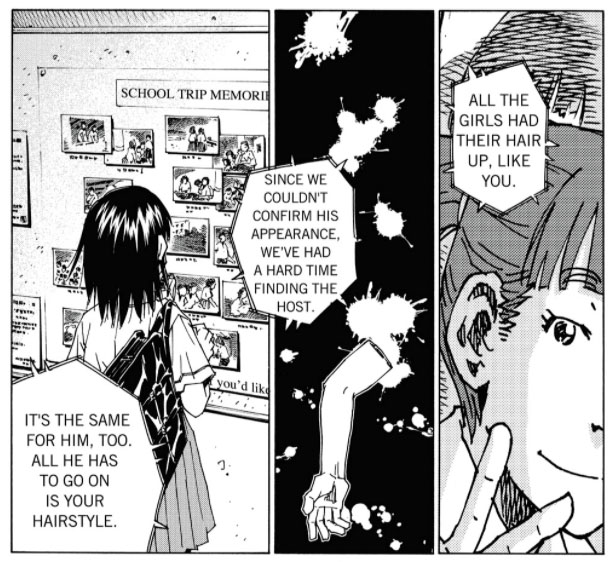
3:00: So yeah, this manga is inspired by a sci-fi novel from 1950, Needle, written by Hal Clement. Kind of an obscure riff by the author, which is cool! Reading about it at Wikipedia, the general plot seems very similar, at least for the first 2 volumes of the manga, and it was a fairly revolutionary SF novel for its time. Cool stuff.
3:10: Yeah, that’s the “lo-fi hip hop radio – beats to relax/study to” girl, actually, as seen below. She was originally a gif from the Studio Ghibli movie Whisper of the Heart but after some copyright stuff, a reasonably original version was created and persists.
5:30: This is ancient history since it’s no longer available on the App Store, but the digital app version of Taiyo Matsumoto’s No.5 was lettered in Comic Sans, and it was kind of a disaster. Luckily the upcoming print edition from VIZ won’t suffer that problem. Anyway, rather than dig up an excerpt of that, here’s the shiny new cover for the new omnibus edition.
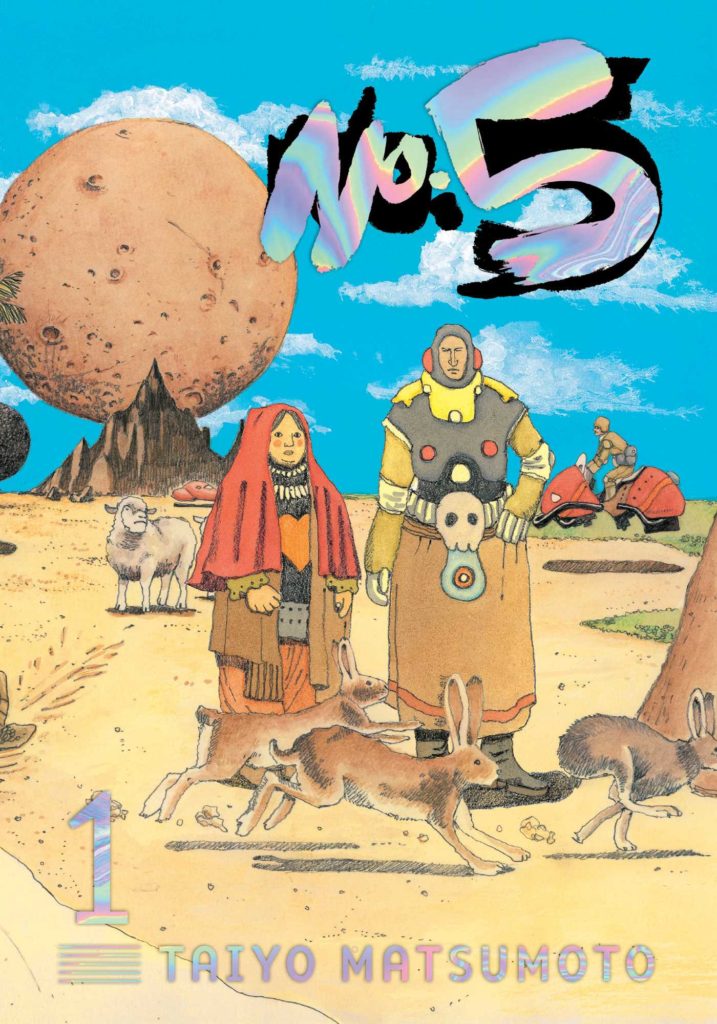
5:45: The letters kept touching the edges of the balloons! It’s infuriating!
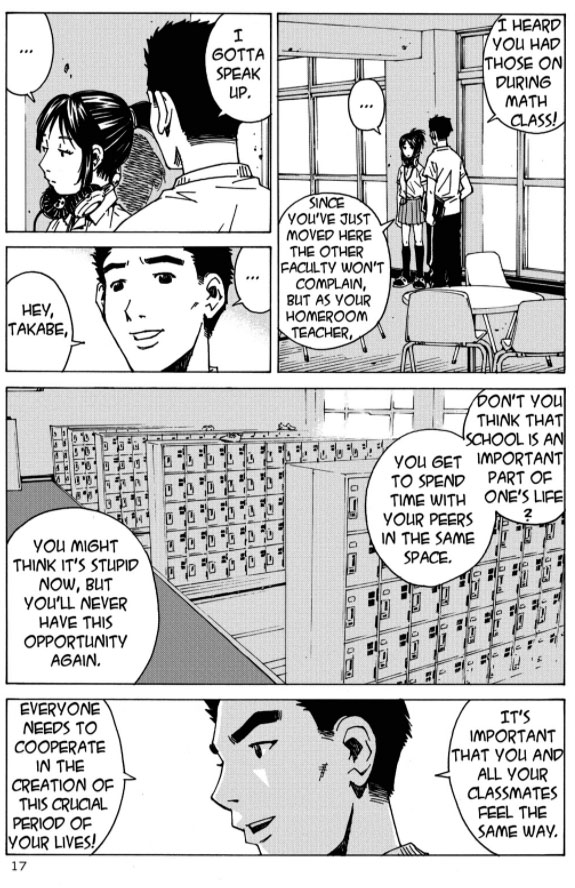
8:40: David mentions two other manga here, Parasyte by Hitoshi Iwaaki, and Inuyashiki by Hiroya Oku. Both are very similar, at least initially, to the premise of 7 Billion Needles–an alien crashes on earth and bonds with a human rather than killing them both, and its counterpart alien(s) also crashed somewhere and they need to track them down. What I’m saying is if this is the kind of thing you like, there’s a lot more of it out there.
10:30: Yeah this cat… isn’t right.
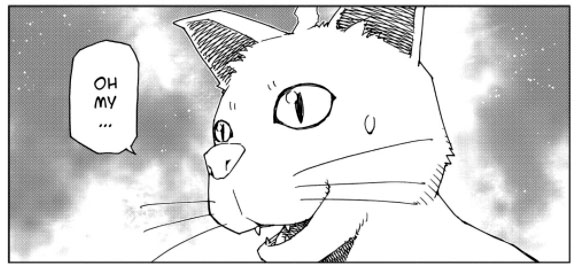
10:45: Like I said, I get the ‘go to’ face for drawing, but this profile drawing doesn’t always work. And when it doesn’t work, it really doesn’t work.
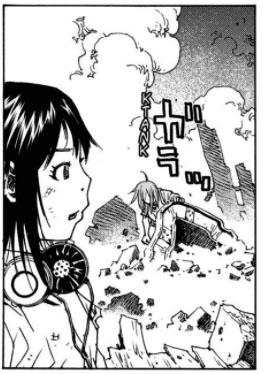
13:40: Jason Aaron was the writer of Marvel’s various Thor series between 2012 and 2019. Here’s more on that.
14:50: The Mediator, with, as Chip says, “The Abs.” Those aren’t quite how abs work.
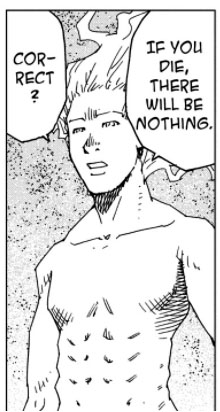
15:30: Okay, so Gekken Comic Flapper, or Monthly Comic Flapper, is a seinen manga magazine that began running in 1999, published by the multimedia company Media Factory, a subsidiary of Recruit Publishing. They produced manga magazines, light novels, anime, and otaku “goods”, and were very present in the otaku space in Japan.
So in 2011, Kadokawa purchased Media Factory and all of its properties from Recruit, but kept running it as a child company, with Kadokawa being the parent company.
It’s worth noting that Christopher mixed up this company specifically with the similarly named ‘ASCII Media Works.’ ASCII Media Works used to be the ASCII corporation and the MediaWorks corporation, which were both purchased by Kadokawa in the early 2000s, then merged into ASCII Media Works in 2008. So Media Works and Media Factory published side by side with the same parent company starting in 2011.
Then, heh, yes this keeps going, THEN in 2013, Kadokawa merged a bunch of the companies it had purchased back into the main company, keeping them only as brand names. So Media Factory, ASCII Media Works, as well as a bunch of other companies were all merged together into one company, simply named Kadokawa.
Then a few years back Kadokawa bought majority ownership of American publisher Yen Press, providing a direct pipeline to the North American market.
That’s today’s lesson in Japanese otaku media consolidation.
17:00: So yeah, this is a bit of a sidetrack, but Ed Brubaker has mentioned in interviews that during his run on the 2002-2006 hard boiled police procedural comic set in Batman’s Gotham City, Gotham Central, he had intended to kill the Joker because, lets face it, that’s the only reasonable outcome to the existence of the Joker. The brass didn’t let that happen of course, but they did shoot him point blank and let ‘doctors save him’. It’s a good example how mass media can be put a crimp on storytelling.
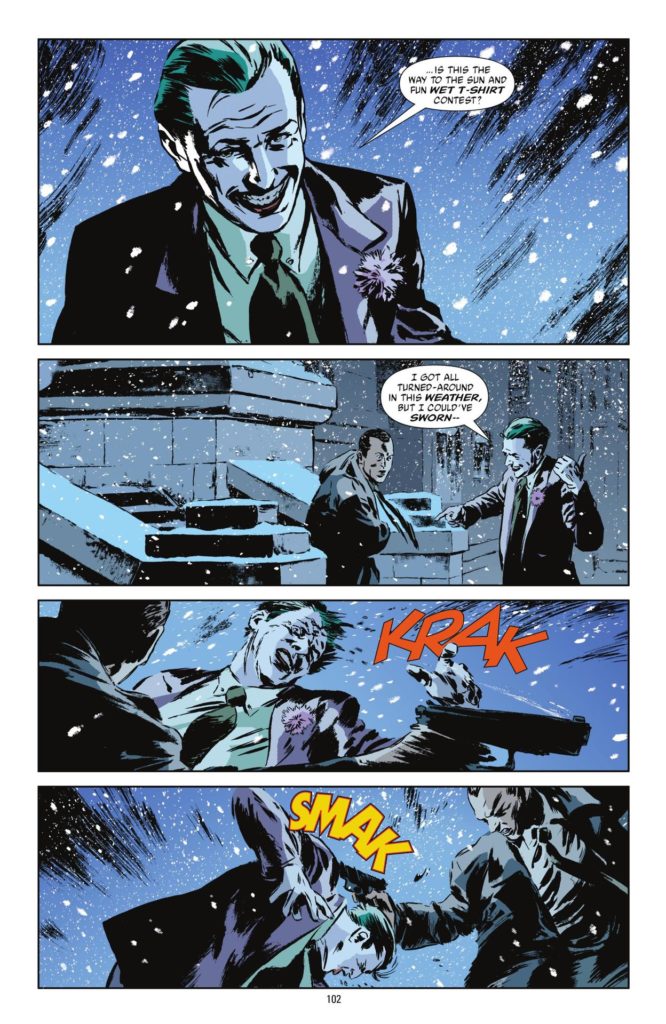
17:25: They did not draw the dude’s dick. Or they did and whited it out after? It’s… it’s so inconsistently drawn and utterly bizarre. Check this out.
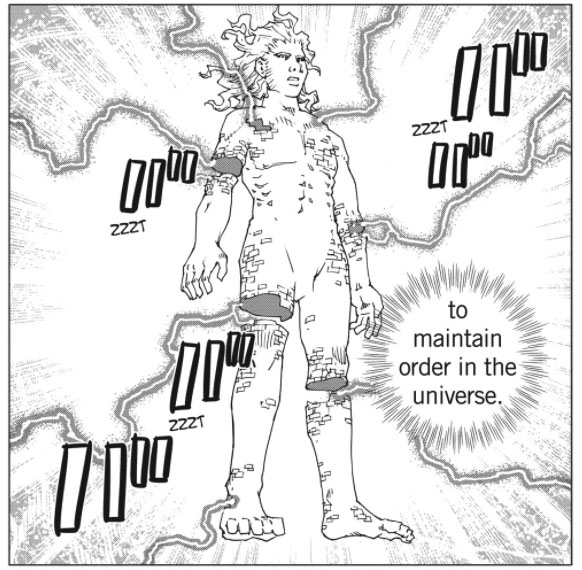
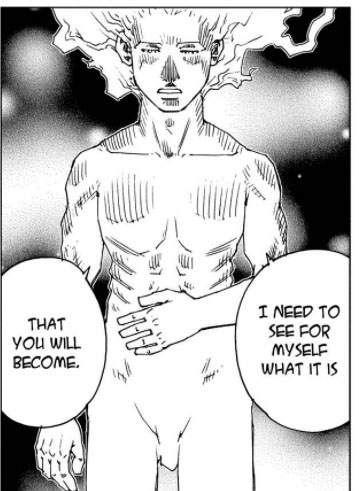
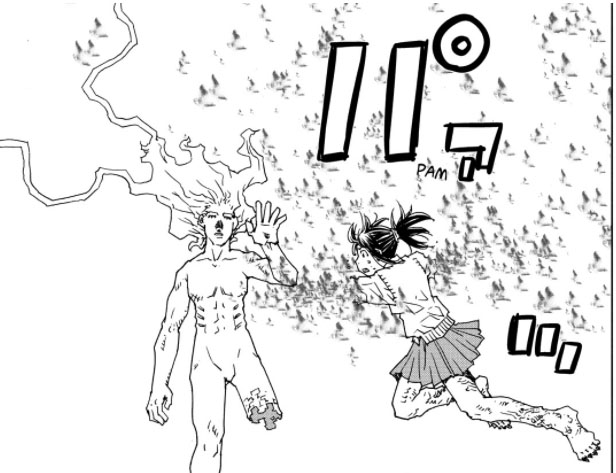
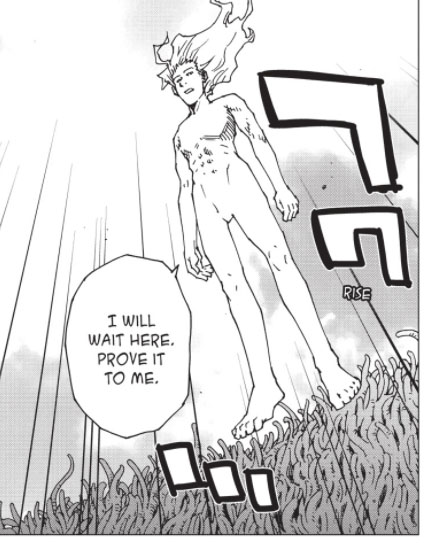
Like, what exactly is going on here? Distracting.
21:00: So yeah, as Christopher says, this manga absolutely bares the influences (scars?) of Neon Genesis Evangelion, a genre-defining SF giant robot anime, manga, and multi-media property. That’s of course alongside AKIRA and of course the initial inspiration, Needle. I don’t quite know how to gloss this succinctly, but the big tell is making a shy, stunted, emotionally-withdrawn loner the center of a story about a kid getting epic power. But yeah, the visual stuff, especially in the last half, is also a pretty big tell too. Specifically the scenes of multiple people’s bodies literally merging into one another. Evangelion’s impact on anime and manga storytelling will be felt for decades.
22:35: So yeah, here’s the English edition covers. They’re quite nice.
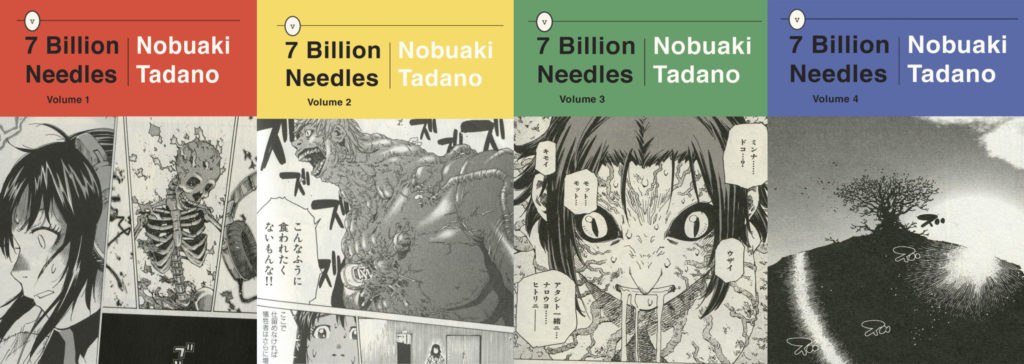
24:00: Sedori. I can’t actually find a definition online easily, but I was first introduced to the term in the VIZ Media manga Kingyo Used Books. That series is now out of print (and not available digitally either…) so I can’t include the relevant image. The best I can do for you is to check out the Wikipedia listing for the series and see that one of the chapters in the first volume is called The Sedori Business. Weird, so much other Japanese pop culture has been excavated. You’d think this would be at least worth a Buzzfeed article.
26:00: The film She’s All That is a remake of Pygmalion set in high school.
28:45: Meanwhile, the Japanese covers to 7 Billion Needles are very different, and might do a better job of reflecting the contents (in my humble opinion).
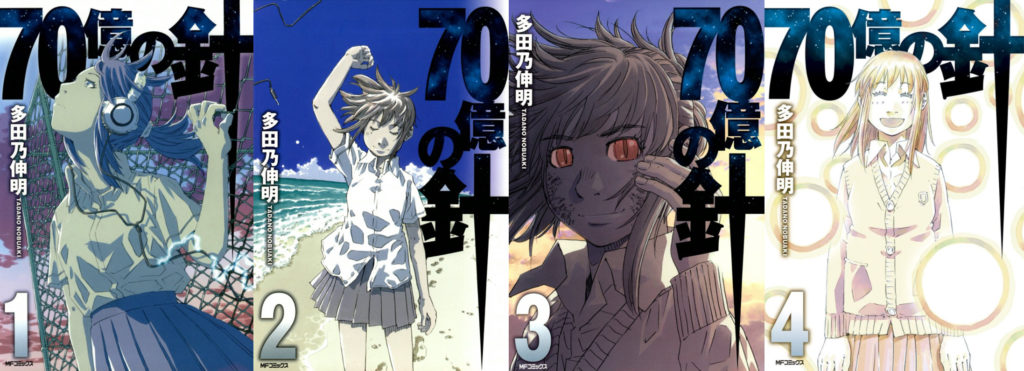
30:00: An example of the colour at the beginning of Chapter 3 that Chip did not care for but Christopher kind of liked.
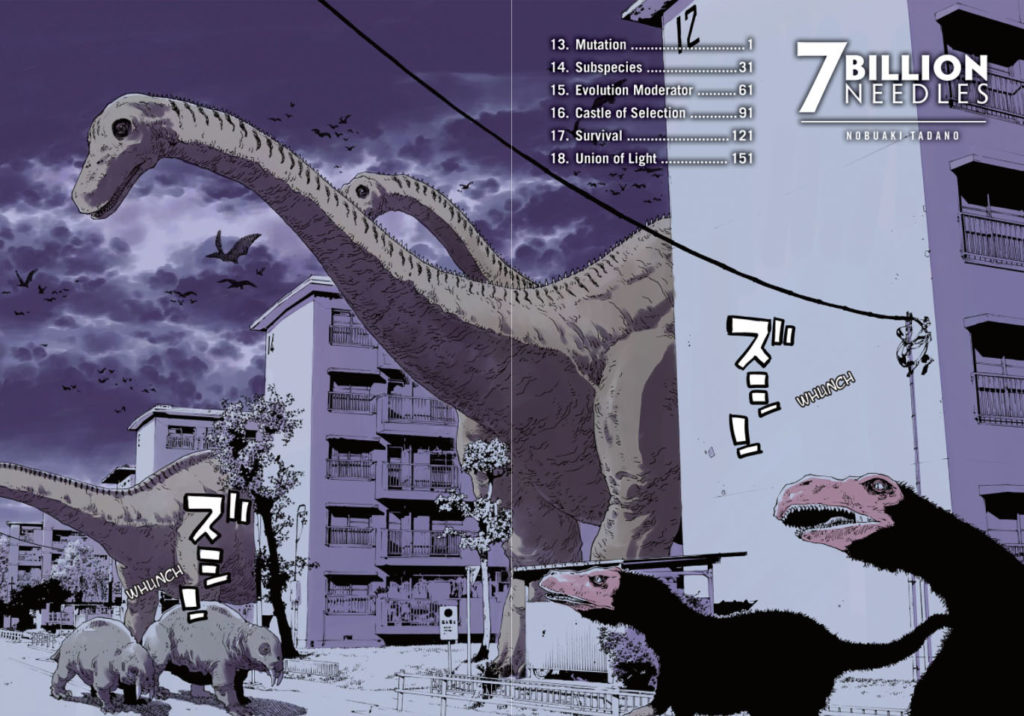
35:00: When her weird arm catches the ball at the beginning of Book 3…? That is weird, how come no one notices that or responds to it. I mean, how come all of these children aren’t in counseling–dozens of kids at their school were murdered and then the school exploded? Don’t think too hard about this.
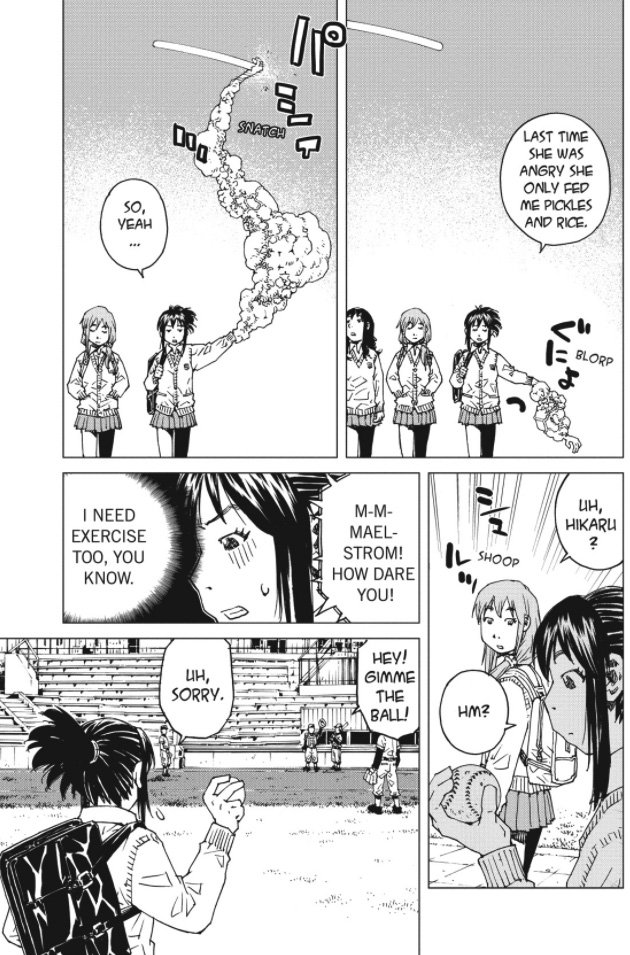
39:30: Hikikomori. This came up earlier but I wanted to gloss it here instead, since we’re talking about it more here, but it’s the idea of being a young shut-in, rejecting mainstream society, living at home forever, and (usually) being deeply invested in otaku culture. For example, if our protagonist was really a hikikomori, she probably would’ve dropped out of school entirely, as so many people do. There are… so many videos on YouTube and the wider world about this. It’s a serious problem, but it’s also become sort of a dark joke even within the otaku community and hikikomori themselves. It’s complicated, but Western takes on it can veer into ‘sensationalized’ sometimes, so if you’re poking around try to get a Japanese perspective, or even better, a variety of perspectives.
41:20: Yeah, “goofy” is a good word for that. The exposition on that page is awful, here it is, cringe along with us.
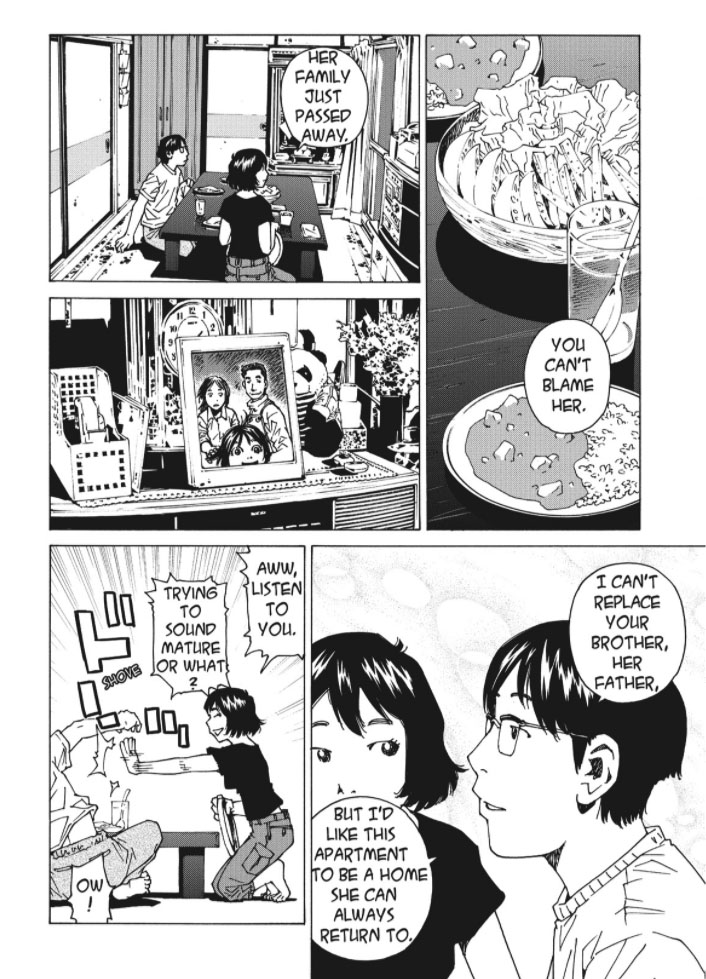
43:20: Yeah there’s a literal bit of text at the end of volume 2 that says “THE HUNT IS NOT OVER!” because if you read the manga… yeah, the hunt feels like it’s pretty much over.
44:40: Vertical Inc. published a LOT of great stuff. In addition to Helter Skelter, which we’ve already read on the podcast, David mentions Chi’s Sweet Home by Konami Kanata, Twin Spica by Kou Yaginuma, and Peepo Choo by Felipe Smith. Unfortunately Chi’s Sweet Home is the only one of those still in print, but they’re all worth checking out.
46:20: It’s true, Deb’s on the Wiki, David’s on the back of the book. These people are Internet famous.
47:55: THE BREAK! Please remember that because of dynamically-inserted ads, all of the timing from this point on is off. Sorry!
48:30: We talked a little bit about the phenomenon of the “Pilot Chapter” in last week’s episode, The Way of the Househusband, but since that was actually recorded after this episode we’re introducing it like it’s new. If you’re following along week to week, first off, thank you! But secondly, sorry you get to be more confused than people dipping in and out.
50:00: That visual effect is really well used, with the world literally drowning out when she puts on her headphones. It’s really good.
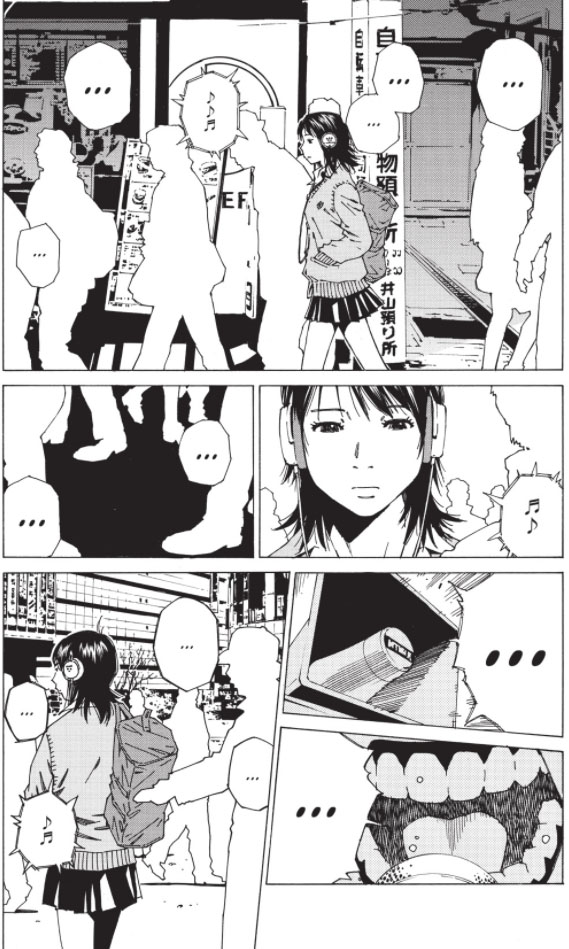
51:00: Yeah, it’s a bit weird that her savior in the short pilot manga turns out to be the murderer in the full fledged manga.
57:18: OL or Office Lady is sort of an outdated term but also still totally used term to reply to working women in office situations. The female counterpart to “Salaryman.”
58:00: Here’s an example of some of the photo-tracing we’re talking about.
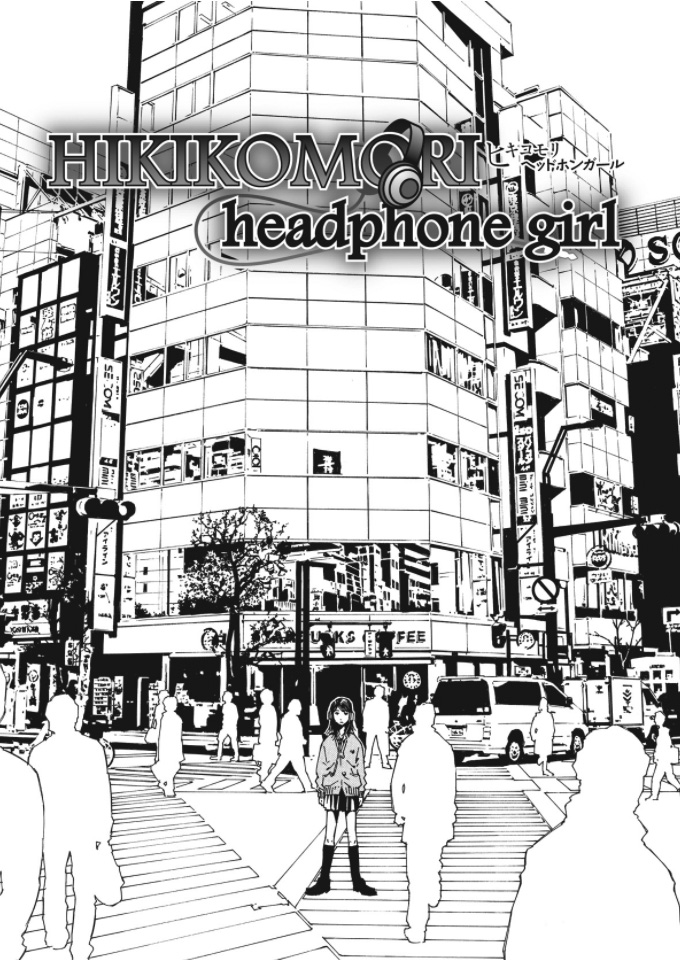
1:00:01: This isn’t a bit. Reading so many ‘backwards’ comics did rewire bits of Chip’s brain in an interesting way, and certain things were mirrored for him. Watch out, maybe manga will break your brain! 🙂
1:05:10: Or if you’re reading here, here’s the link to that comment, with the comparisons on AKIRA from that comment thread! Nifty! https://www.mangasplaining.com/blog/episode-1-akira-vol-1/#comment-3
1:05:30: CLAMP! I’m… I’m getting tired. So here’s the Wikipedia entry on CLAMP.
Clamp (stylized as CLAMP) is an all-female Japanese manga artist group. It consists of leader Nanase Ohkawa and three artists whose roles shift for each series: Mokona, Tsubaki Nekoi, and Satsuki Igarashi.
Clamp was first formed in the mid-1980s as an eleven-member group creating dōjinshi (self-published fan works), and began creating original manga in 1987. By the time the group made its mainstream publishing debut with RG Veda in 1989, it was reduced to seven members; three more members left in 1993, leaving the four current members of the group.
Notable works by Clamp include X (1992), Magic Knight Rayearth (1993), Cardcaptor Sakura (1996), Clover (1997), and xxxHolic and Tsubasa: Reservoir Chronicle (both 2003). Clamp are noted as among the most critically and commercially acclaimed manga artists in Japan, and as of 2007, have sold nearly 100 million books worldwide.[1]
Wikipedia
1:07:00: So as mentioned, every CLAMP series totals over 30,000 pages.
So I did the math! Here’s the rough quantity of Rumiko Takahashi in English:
- Urusei Yatsura, 12 volumes @ ~390 pages = 4680 pages
- Maison Ikkoku, 6 volumes @ ~370 pages = 2220 pages
- Ranma ½, 19 volumes, @ ~370 pages = 7030 pages
- Inu Yasha, 18 volumes, @ ~760 pages = 13,680 pages
- Rin-Ne, 37 volumes, @ ~192 pages = 7104 pages
- One Pound Gospel, 4 volumes, @ 192 pages = ~780 pages
- Mermaid Saga, 2 volumes = ~750 pages
- Rumic World/Theatre = ~600 pages
That’s just about 36,844 pages. So PERHAPS THAT’S A FEW MORE THAN CLAMP, EH?
And with that, we’ve got a couple of shout-outs this week.
SHOUT OUTS:
Deb shouts-out the manga Beauty and the Feast by Satomi U, published by Square Enix. Deb gets weird vibes from it but so far as anyone knows it’s totally innocent and it doesn’t go there. Chip feels bad about his response, but he didn’t know to what he was referring.
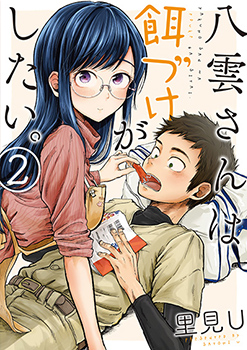
Christopher shouts-out the manga Even Though We’re Adults, by Takako Shimura, published by Seven Seas. Same author as Wandering Son which we forgot to mention. Translated by our friend Jocelyne Allen.
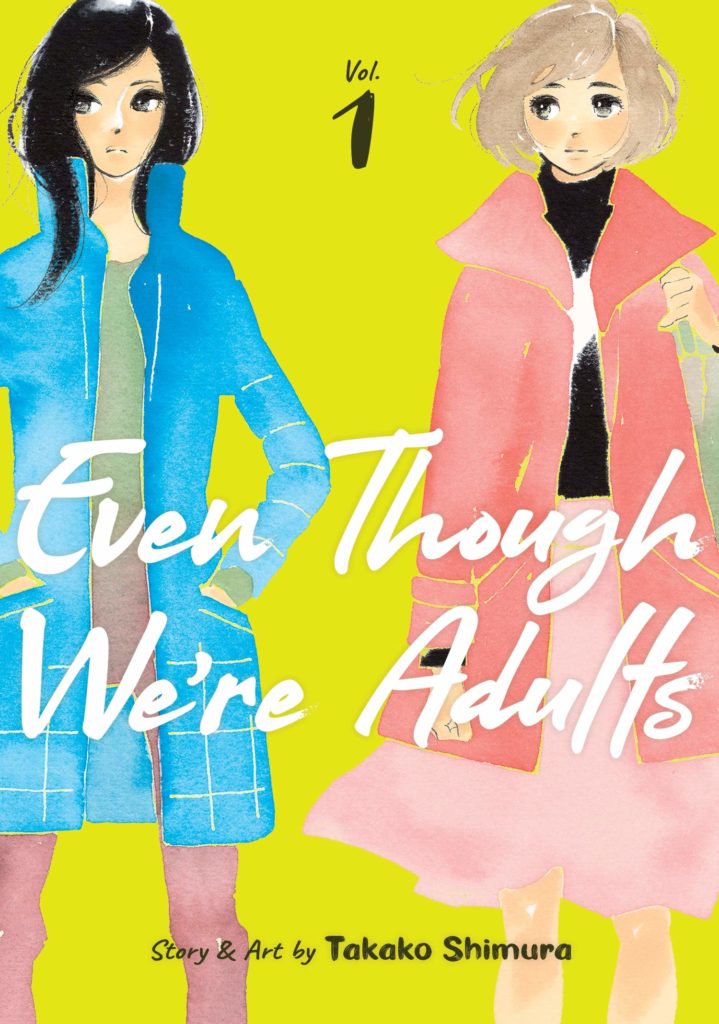
…and that’s it for this week!
—
Thanks for listening! Here’s what the next few weeks of episodes look like:
Ep. 10: Tekkon Kinkreet, by Taiyo Matsumoto. Published by VIZ Media. (Apr 20)
Ep. 11: Fullmetal Alchemist, by Hiromu Arakawa. Published by VIZ Media. (Apr 27)
Ep. 12: Oishinbo, by Tetsu Kariya and Akira Hanasaki. Published by VIZ Media. (May 4)
Ep. 13: Beastars, Vol 1, by Paru Itagaki. Published by VIZ Media. (May 11)
Those links again are:
Comicshoplocator.com
D.A.D.S. on Spotify
Thanks for listening!
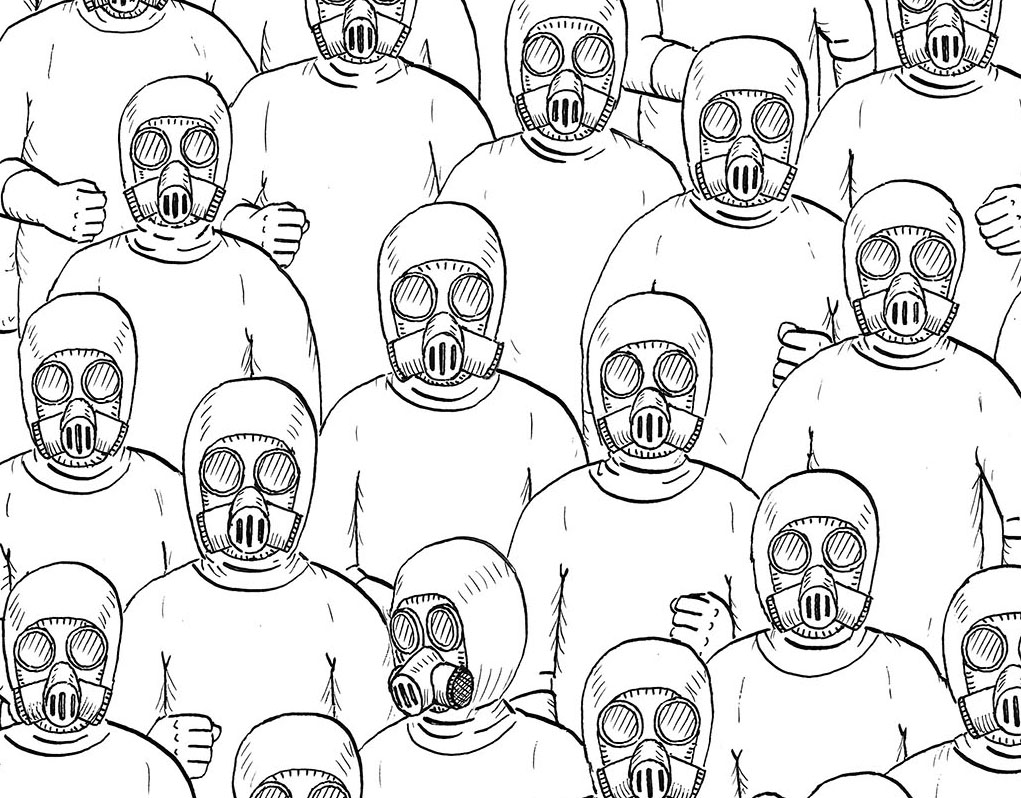
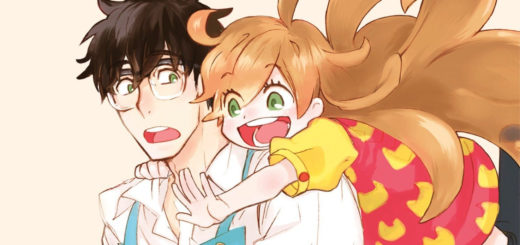

Speaking of the covers (which I really like!), it seemed really weird for me that the image for the cover to volume 3 didn’t actually appear in volume 3. (It’s from volume 4.)
Also, I’m sure that Deb and David’s reviews a decade ago were why this was on my “to read” list forever. I’d been hunting for it in print for years, but finally broke down and bought the digital version of volume one in January of this year. Strange to have it pop up again in this podcast!
I’m really glad you introduced me to this story, despite its many flaws. I’ve been trying to find some shorter manga series to just read and enjoy without having to invest the time, money, and shelf space to 40+ volumes of series with no end in sight. I’m also pleased that for its many flaws you were able to be critical while praising the parts you enjoyed, so the discussion around this story and the art was great.
As always, not much to contribute that you didn’t cover already, but I did want to speak to one of the tropes brought up during the show in having yet another high school girl as the protagonist/hero, especially one written by a man. I suppose each culture has their own tropes, but this one I find the most cloying. I guess the flip side is if this had been a North American comic, the protagonist would have been a middle-aged white guy with brown hair who wife has recently left him. Every culture has their tropes. By the end of the story, however, I think having a high school girl as the lead worked for me. I could believe in her somewhat naive and innocent approach to wanting to save her friends. She wasn’t there to debate the metaphysical underpinnings of evolution with a godlike being from space with weird abs. Just glad it wasn’t (too) exploitive in the way most manga centered on high school girls are. Storytelling and artistic flaws aside, at least I wouldn’t have qualms about lending it to someone over exploitation concerns.
All in all, glad I read it, especially as I enjoy SF stories like these. The twist in volume 2 where the Maelstrom is revealed to be coinhabiting her body is probably what kept me on board. If not for that, I could see it turning into another cat-and-mouse game of good alien chasing bad alien, a la the 1990 Dolph Lundgren cheese movie “I Come in Peace.” I agree with (I think) Chip who said it would have been nice to see to more done with that twist. Definitely a lot of humor and story to potentially mine there.
Hey thanks so much for your comment, and we’re glad you enjoyed the episode and took something away from the book! That’s so cool! 🙂
So I definitely enjoyed reading the series but I honestly don’t think this great enough to recommend to people as Great Manga You Need To Read.
Something I was thinking about when listening to the episode, could the “ending” at volume 2 and the shifting to weird Sci-Fi in the 2nd half of the series be attributed too the author accelerating or altering their original plans due to low numbers/popularity and trying to change things up to try to be draw more readers. I have no idea how popular it was in Japan, but that has happened to other series I’ve read. So that might explain the odd and also sudden shift in the story.
Sorry for the late-commenting here, but probably where Needle carried over to Parasyte, Evangelion and all those other works was through a series that wasn’t initially an anime or manga when it came out, and which you didn’t bring up – Ultraman.
Elevator pitch explanation (since I’m starting the podcast from the beginning, so I don’t know if this has come up yet – and for the benefit for those reading the comments who are unfamiliar with Ultraman): What if you crossed Hal Clement’s Needle with Green Lantern, where instead of giving Hal his ring, Abin Sur merged with Hal Jordan – and Hal was part of UNIT (from Doctor Who), to give a narrative reason to chase down monsters.
Ultraman, from my understanding, a significant level of cultural penetration in Japan – if you show a picture of the first Ultraman, they’ll recognize that it’s Ultraman, or that a later one is an Ultraman, but they won’t necessarily remember the names of the supporting cast.
As an aside, Hideaki Anno, the creator of Evangelion, is a big Ultraman superfan – he made an Ultraman fan film while in college, and he’s put references to Ultraman in a lot of his other works – well before he got the job to direct Shin Ultraman.